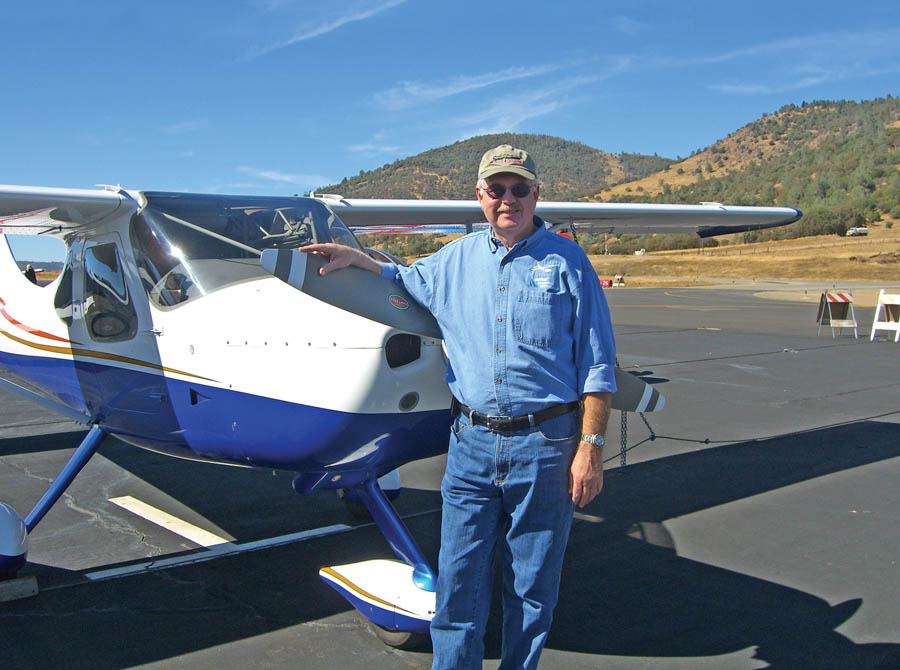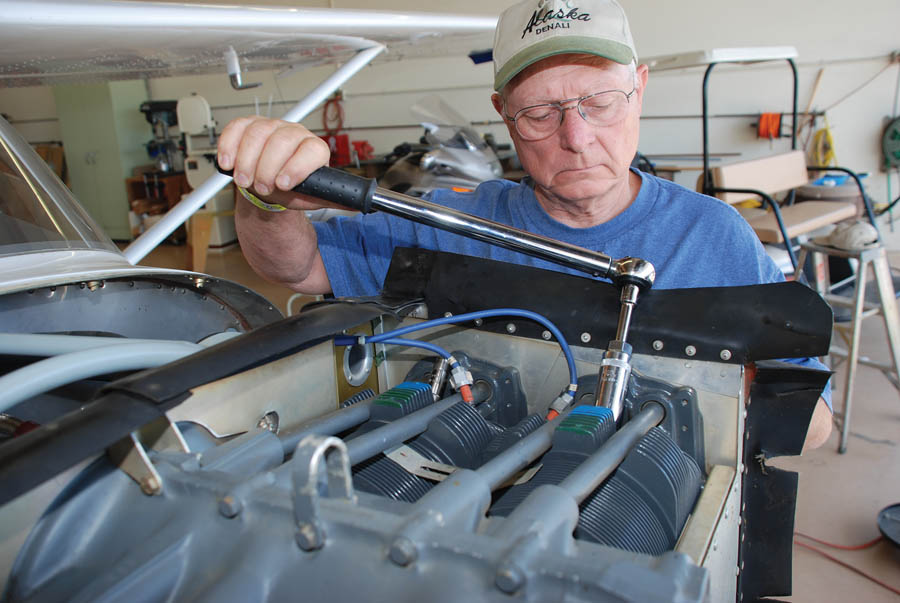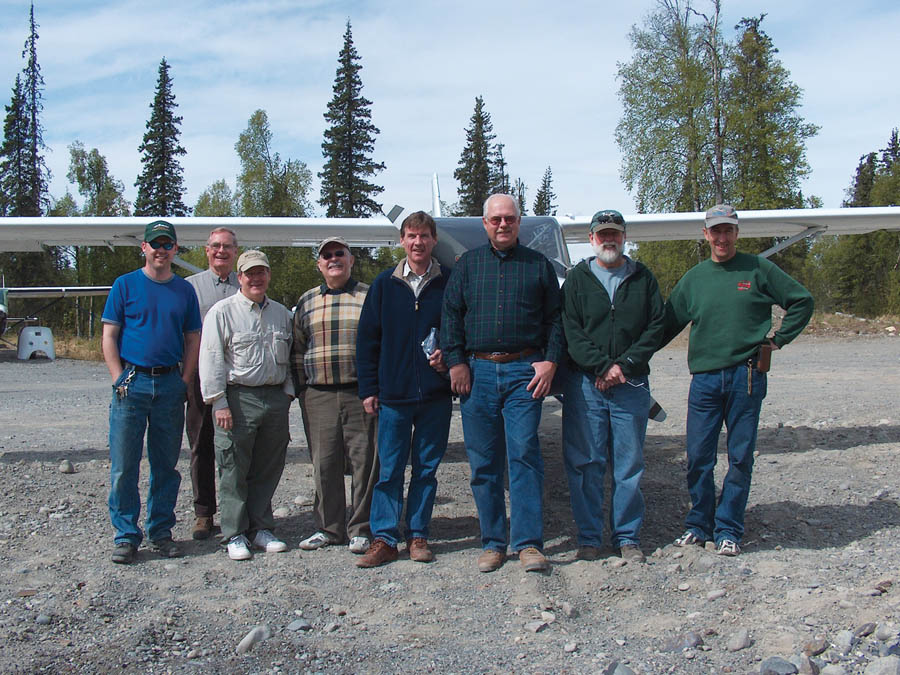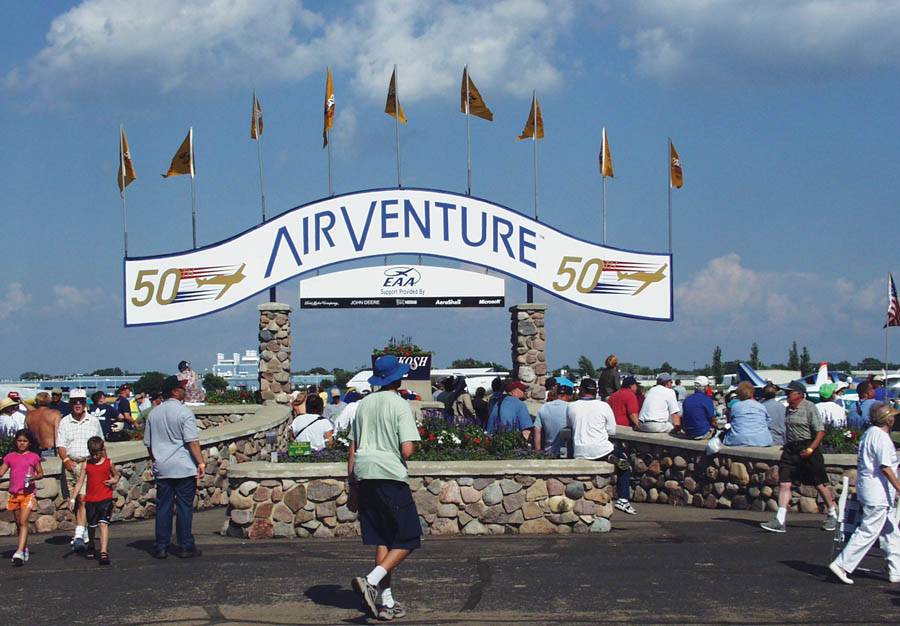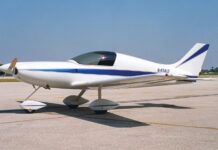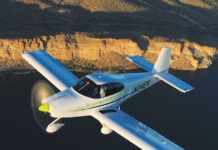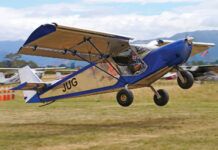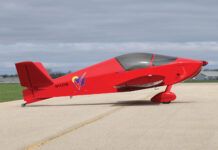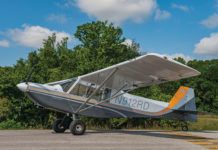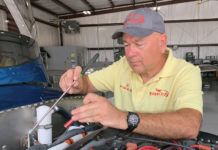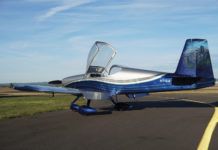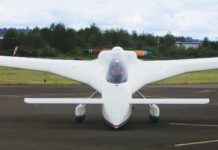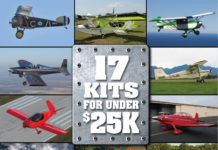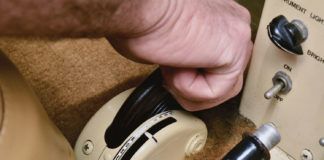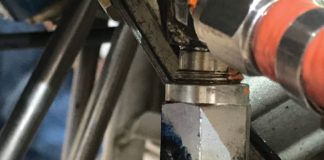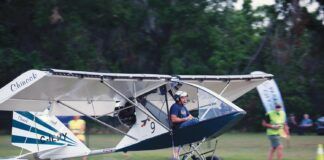Dave Prizio has enjoyed using his E/A-B Glasair Sportsman for 12 years. It has served him reliably and comfortably for both business and pleasure. From his Southern California base he has ventured as far east as Oshkosh several times and as far north as Prudhoe Bay, Alaska.
You have learned how to fly, or maybe you just want to learn how to fly, or maybe you are just tired of renting. You want a plane of your own. You’ve had a look around at what is available new and said, “Too expensive.” Then you looked at the used market for a certificated airplane—Cessna, Piper, Cirrus—and said, “That’s not what I want either. They just aren’t right for me.” Then a used experimental catches your eye—maybe a Van’s RV-7 or a GlaStar. They look like pretty solid airplanes and the price is right. So, is there any good reason why you shouldn’t buy one of these airplanes instead of a used Cessna or Piper? In general, no; in the case of any one particular plane, maybe. As is the case for making any large purchase of a used anything, there is much to do to determine if a used experimental is right for you. The purpose of this series is to help you make that decision intelligently, so you end up with a good airplane ownership experience that includes lots of safe, fun flying at a reasonable cost.
What is an Experimental?
Let’s clarify some terms before we get too far along. Experimental as used here refers to an Experimental/Amateur-Built airplane. This is often shortened to E/A-B. There are other types of experimentals to be sure, but they are not our concern, with one exception. There is another class of experimental called Experimental Light Sport Aircraft, or ELSA for short. They are similar to E/A-B airplanes but with some important differences in how they are built, registered, and maintained. We will take a more detailed look at that topic later, but at this point just note that E/A-B and ELSA are not the same. You may also run across a plane that is Experimental Exhibition or one of the other Experimental categories. As a general rule these should be avoided unless you know exactly what those other categories entail.
The Cirrus SR-20 (left) and Van’s RV-10 provide a good matchup of certificated vs. experimental airplanes. The E/A-B RV-10 cruises 16 knots faster, stalls two knots slower, takes off in 1100 feet less runway, and has a slight edge on useful load. It does have a larger engine and will use more fuel at maximum cruise, but at a reduced cruise speed it should match the Cirrus’ fuel consumption. A used RV-10 will cost somewhere in the range of $140,000 to around $275,000, depending on age and condition. A legacy six-cylinder Continental-powered SR-20 can be had for as little as about $130,000, and up to something over $400,000 for a current one with a 215-hp four-cylinder Lycoming. (Cirrus photo: Larry Anglisano. RV-10 photo: Geoff Combs.)
Airplanes made by companies such as Cessna, Piper, Cirrus, Beechcraft, and others are certificated airplanes. This means that they were built according to an FAA-approved type certificate that describes their design and what equipment they may have installed. They are built in factories that hold FAA-approved production certificates that say how the planes are to be built. The maintenance and repair of these planes is governed by approved maintenance and repair manuals that all mechanics are expected to follow. In other words, certificated airplanes are designed, built, and maintained according to specifications and procedures that the FAA has reviewed and approved. All of these planes, as long as they follow the FAA rules that apply to them, may hold standard airworthiness certificates.
With only a few exceptions, E/A-B airplanes are exempt from these rules. In other words, anyone may design and build an experimental airplane, and anyone may maintain or repair one. This is good if you are a builder who wants to create and personalize the airplane of your dreams. This presents some challenges if you are a non-builder buyer, because there is not a clear standard to which you can refer and see if the plane you want to buy has been built and maintained in compliance with that standard. That doesn’t mean that there aren’t plenty of solid and very safe experimental airplanes available to buy, but it does place an extra burden on you as a buyer to make sure what you are buying is one of those well-built planes.
Each year someone must attest to the safe condition of an E/A-B airplane. The original builder typically gets a repairman certificate from the FAA after completing the final signoff of his or her project. That allows the builder to do the yearly condition inspection on that airplane only. If no one holds a repairman certificate for that plane, the condition inspection must be performed by a licensed A&P mechanic. Of course, once a builder sells his or her plane, he or she is unlikely to want to do future condition inspections, so that means you, as a non-builder owner, will need to hire an A&P mechanic once a year. This is an important way in which ELSA rules differ from E/A-B.
Any owner of an ELSA airplane may take a training course and earn a repairman certificate, even if they didn’t build the plane, and then perform all maintenance including the yearly condition inspection. This is something to consider when deciding between an E/A-B and an ELSA airplane.
Liability Issues
When a certificated airplane has something go wrong with it that results in an accident, there is usually someone to sue, even if the original airplane manufacturer is protected by the 18-year statute of limitations. There are component manufacturers, licensed mechanics, repair stations and such who all have potential liability and may be forced to pay out claims that will benefit you, your family, and heirs in case you are injured or killed. With an experimental airplane you are most unlikely to benefit from such an award, because litigants have been notably unsuccessful in winning lawsuits against kit or component manufacturers in such cases, let alone amateur builders. This has allowed experimental aviation to flourish unimpeded by ruinous litigation, but it does place the burden of providing for yourself and your family squarely back on you. This is something to consider before you get injured or worse and wonder who is going to pay for whatever went wrong.
The Upside of Experimental
If there are admittedly some special problems to overcome with E/A-B airplanes, there are also tremendous potential benefits. Performance and reasonable ownership costs only dreamed of by certificated airplane owners are available to E/A-B owners, even if they aren’t the original builders. The dizzying array of available experimental avionics alone is enough to keep you dreaming and, to the extent you can afford it, delighted for a lifetime. E/A-B owners were enjoying sophisticated glass cockpits years before the airlines ever began to catch up, which they never have, by the way. In almost every corner of the airplane performance envelope, you will find experimentals outperforming certificated airplanes at a fraction of the cost.
With the price of a new Cessna 172 closing in on $400,000, it is little wonder that airplane buyers are taking a hard look at E/A-B alternatives such as the Glasair Sportsman or the Van’s RV-10 that can be had for half that amount or less. There’s a reason why Van’s sells more airframes every year than Cessna, and the reason is value—performance for the dollar spent. Of course, some assembly is required, but you can easily buy one that someone else already built. You just need to be careful to find one that was built well. Hopefully this series will help you do just that.
A great benefit of E/A-B ownership is being able to do your own maintenance work. This can be a great source of satisfaction and save a lot of money and frustration. Of course, you should get the training and tools required to do a good job, since a lot is riding on the quality of your work.
Maintenance
We mentioned before that anyone can maintain an E/A-B airplane. That means you can work on your own plane even if you didn’t build it. That doesn’t mean just oil changes and replacing the occasional worn tire; that means you can do everything that you are comfortable doing, right up to and including overhauling your engine or rewiring your instrument panel. Of course, that doesn’t mean you should do those things unless you have the experience and training to do them well, but you can if you want to. Training for many of these tasks is available through the EAA, either in their SportAir workshops or at AirVenture, their annual gathering in Oshkosh, Wisconsin.
EAA SportAir workshops provide the opportunity to learn new skills. Here some students learn sheet metal work. Courses in fabric, composites, electrical, and other topics are available in workshops that travel around the country. Similar training is offered at AirVenture every summer.
If you are already familiar with working on cars or motorcycles, you may have many of the tools you will need to work on an airplane. If you work on electronics or computers, you will find working on modern avionics not all that much different. In other words, for many people working on your own plane will not be that difficult to master. And even those less experienced can gain the knowledge over time with training and a helping hand from their fellow E/A-B owners. Many EAA chapters have people who are glad to help a newcomer. In any case, the money saved by doing your own work can be substantial.
Half the Fun Comes from the People You Meet
I often tell people that I started off building an airplane but ended up with a big bonus—building a lot of new friendships. There are a lot of great people out there who have the makings of being good friends. Somehow it is easy to find them through the common interest of building and owning an experimental airplane. You may think that you will be a second-class member of the club if you haven’t built your own plane, but that has not been my experience. People are glad to welcome you and help you gain the knowledge you need to enjoy your airplane ownership experience to the maximum extent possible. This is what EAA chapters are all about, as are the various online forums and associations centered around a particular type of airplane. This sort of comradery is seldom matched by type clubs in the certificated world.
One of the greatest benefits of joining the fraternity of E/A-B owners and builders is the friends you make along the way. Here a group of GlaStar and Sportsman owners enjoy their trip to Alaska together after landing on a dirt strip near Talkeetna. Besides flyers from around the country, this group includes owners from Switzerland, the U.K., and Canada.
Use the Resources Available to You
There is a wealth of information available to the potential E/A-B airplane buyer. There are EAA chapters and type clubs and forums. There is accident data available from the EAA, NTSB, and from time to time this magazine. There are the major airshows such as Sun ‘n Fun in Florida and AirVenture, not to mention smaller regional airshows that cater to the E/A-B crowd. And, of course, there is a mountain of information available online.
If you are serious about buying a used E/A-B airplane, you simply must attend AirVenture. In no other place is so much information available and are so many different E/A-B airplanes present for your viewing. As an added bonus, many of these planes are available for sale.
If you are thinking about buying an airplane, E/A-B or otherwise, you are about to embark on a life-changing experience that may impact you and your family for some time. You will be spending a fair bit of money, or maybe a lot of money, which can impact your finances and your family in many ways, especially if you choose your plane poorly. You are about to embrace new opportunities and new risks that you may not fully appreciate initially. These need to be carefully considered. And, finally, you are likely to change your lifestyle to some extent to take advantage of your new acquisition. After all, if you aren’t going to fly more than you did before, why are you buying a plane?
Over the next few months we will look at how to select the right E/A-B plane for you, including a broad survey of what is available, and we will look at the all-important prebuy inspection. Lastly, we will take a look at the special challenges of buying a partly completed E/A-B kit, a special case in which you may still enjoy the benefit of being a builder but potentially save a great deal of the effort that usually comes with it.
There is a lot to think about here, so a sober assessment of the available information is definitely in order. Take your time, get help, take advantage of the resources available to you, and then make an informed choice. There is a lot riding on it, so don’t try to cut corners as you go through the decision process. In the end you will be glad you did.


